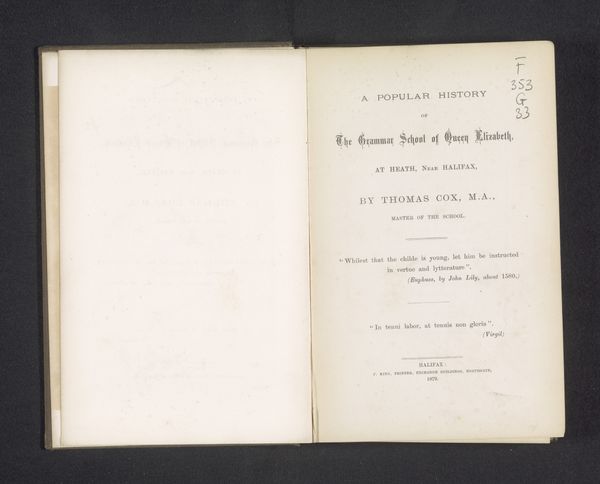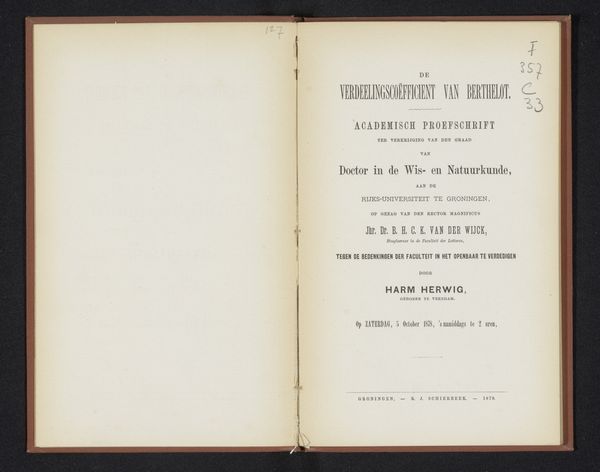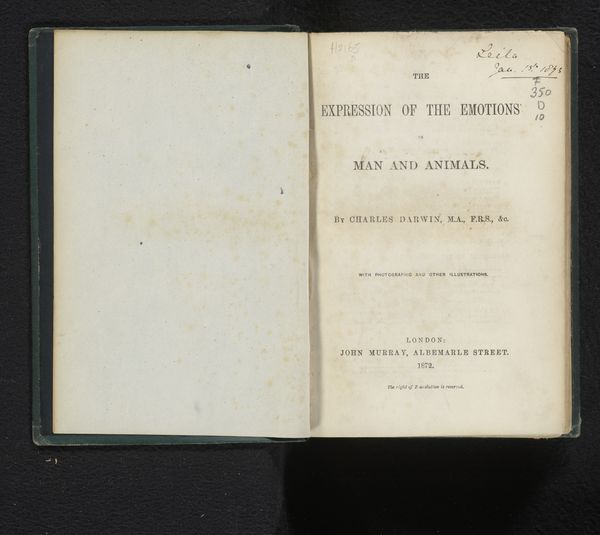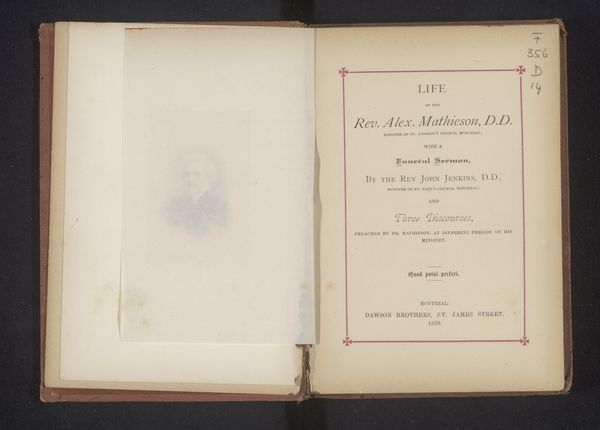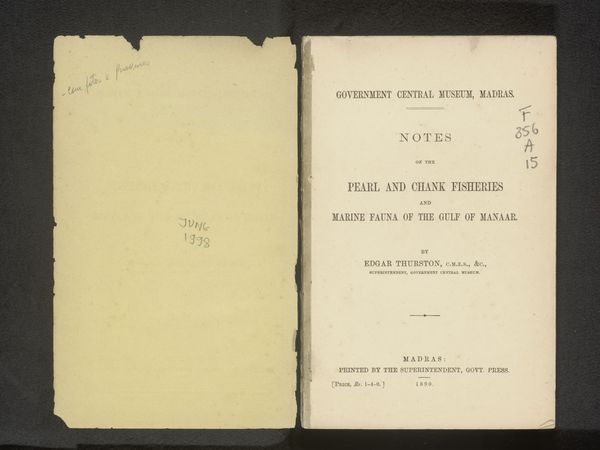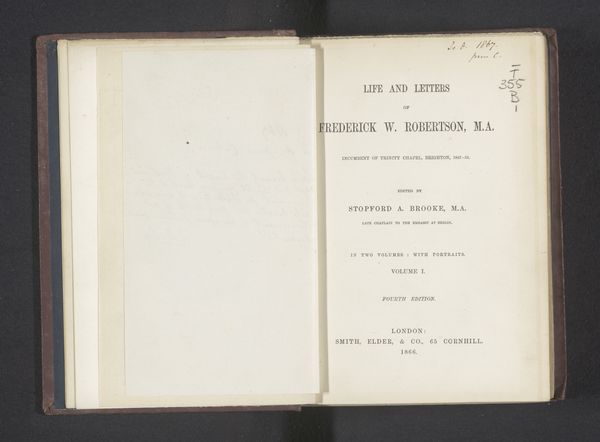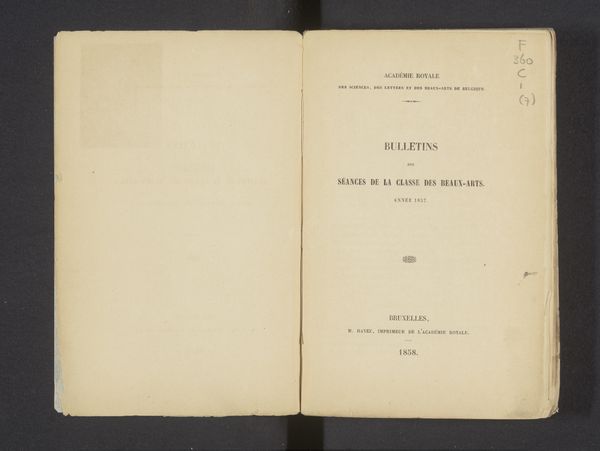
Wrecks and reminiscences of St. Andrews Bay : with the history of the lifeboat, and a sketch of the fishing population in the city, with a glance at its early history 1884
0:00
0:00
print, paper, typography
#
aged paper
#
homemade paper
#
paper non-digital material
#
paperlike
# print
#
book
#
personal journal design
#
paper texture
#
paper
#
typography
#
folded paper
#
golden font
#
letter paper
#
historical font
Dimensions: height 188 mm, width 134 mm, thickness 34 mm
Copyright: Rijks Museum: Open Domain
Curator: At first glance, it feels almost like peering into an old sea captain's logbook. The aged paper and classic typography lend an immediate sense of history. Editor: Absolutely, that's spot on. What we have here is the opening spread of "Wrecks and Reminiscences of St. Andrews Bay," a print created in 1884 by George Bruce. It speaks to the public’s interest in maritime disasters and local history. Curator: You can practically smell the salt air. The title alone evokes dramatic narratives—wrecks, lifeboats. The fishing population – there’s a powerful connection there between the community and the sea. It must have played an immense role in defining their identity, their folklore. Editor: The title uses the lifeboat as an important image for saving lives in times of disaster and I wonder how much of this image relies on religious symbols or language? It certainly speaks of sacrifice. Note that Dundee served as a prominent publishing location. Curator: Looking closely, the typography is fairly simple, which contributes to a sense of authenticity, avoids high embellishment and pretension. You might see this in similar publications created to celebrate historical local disasters, like a big storm event that ravaged the coast. Editor: The very composition of the page—the title dominating the upper half, followed by details about the author and the small quote beneath it, acts almost like a symbolic hierarchy. God and the people on the bottom, supporting their claims through spiritual morality and memory. It evokes a society profoundly shaped by faith, peril and community bonds. Curator: Considering the date, 1884, the book was created in a moment when mass print media was expanding dramatically, especially to deliver sensational content. Editor: Which offers, now that you mention it, a powerful contrast to how personal and immediate this book must have felt to local eyes back then. There’s a raw humanity hinted at in its pages. Curator: It certainly invites you to explore further into those hidden histories, doesn’t it? The visual form here really enriches the tale before you even read a word. Editor: Precisely! A beautiful dance between historical event, typography, faith, and an ocean's unrelenting pull.
Comments
No comments
Be the first to comment and join the conversation on the ultimate creative platform.
